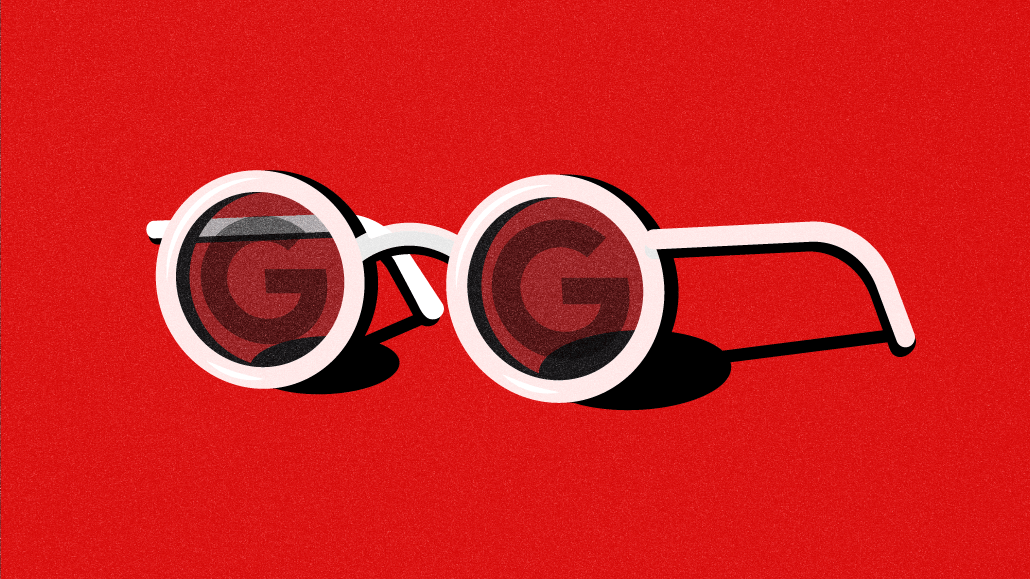Save 50% on a 3-month Digiday+ membership. Ends Dec 5.
Google expands ‘conversational’ generative AI tools for advertisers powered by Gemini

Google is expanding use of its powerful new Gemini AI model to let more search advertisers create campaigns with a single URL.
The search giant yesterday said its “conversational” generative AI tools are now available for beta access to advertisers in the U.S. and U.K. before global access arrives for English-language advertisers in coming weeks.
The new tool, first announced last year, lets advertisers give Google the URL for a website landing page, which is used to create an AI-generated search campaign with relevant ad content, including copy, images and keywords. Google’s chatbot can then converse with advertisers about campaign goals, target audiences and ideas for more ad content. The AI-generated ads still subject to final human approval from the advertiser before a campaign goes live.
There are also still major concerns about what GenAI will mean for consumer trust in AI-generated content — especially as GenAI tools are increasingly misused during an election year. According to Gartner, 70% of consumers have “at least some trust” in GenAI-backed search results and just 20% express “complete or a great deal of trust.” And yet, 79% of consumers surveyed said they’ll use GenAI-based search “at least a little” within the next year.
According to Google, GenAI ads will also be watermarked with Google’s SynthID so they’re invisibly labeled as GenAI content. However, some AI experts have already pointed out that AI watermarking doesn’t necessarily stop AI-generated misinformation. Recent reports have also already found examples of AI-generated websites with misinformation showing up in Google News search results.
Although it’s the first time Gemini — which debuted in December — has been integrated with a Google advertising tool, Google already has released other GenAI ad tools in recent months. Beyond using GenAI for ads, yesterday Google released new features for Chrome and last week debuted a new “Circle To Search” feature for Android users.
Google declined an interview about the updates. However, in a blog post, Shashi Thakur, a vp and gm of Google Ads, wrote that a small group of advertisers have been testing the GenAI tool in recent months.
Ad position: web_incontent_pos1
“As Search becomes more visual, we’ve heard advertisers tell us that it can be challenging to create compelling images that drive performance,” Thakur wrote. “That’s why we designed the conversational experience to suggest images tailored to your campaign using generative AI and images from your landing page.”
The growth of GenAI for users and advertisers will dramatically alter search engines, according a recent report from Forrester, which expects spending on marketing technology tools to increase 13.5% annually and surpass $215 billion by 2027. According to Forrester senior analyst Nikhil Lai, Gemini’s expansion is another example of Google “betting on advertisers’ choosing workflow efficiency at the expense of transparency and control.”
“Gemini’s expansion necessitates the synergy of SEM and SEO, now that ads’ quality scores directly reflect the quality of organic content from which ads are gleaned,” Lai said. “Better performance comes from the quality of marketers’ content and data inputs, which requires a deep understanding of audiences’ intent.”
Google’s updates could also be beneficial for other marketing-related GenAI startups that partner with Google and other platforms. Vishal Sood, chief product officer at Typeface, said there’s a lot of relevance with what Google announced and the ways TypeFace has been developing to help marketers create AI-generated content for ads and other content. The updates help validate Typeface’s current focus for its clients and existing partner like Google and other giants, according to Sood.
But won’t this be another evolution of growing startups being “frenemies” with major platforms like Google and Facebook, which cut out agencies and other partners by working directly with advertisers on content creation during the Web2 era? Sood doesn’t think so.
Ad position: web_incontent_pos2
“A lot of brands are looking for this one place where they can create something and then push to multiple endpoints,” Sood said, “That’s where we already really resonate with customers. And anything Google does is kind of great for us because it reinforces that the path is right…We benefit because we also use their models, but ultimately from a customer perspective, we can add a ton of value doing omni-channel campaigns versus a single channel.”
Marketers are facing decline organic traffic that could be buoyed by GenAI content, according to Gartner analyst Nicole Greene. She said Gartner estimated organic site traffic declined 9.% between the fourth quarter of 2022 and the third quarter of 2023.
“To address this, they’ll need to focus more on where customers are, increasingly in genAI enabled search platforms,” Greene said. “CMOs also need to rethink how they measure success, and a straightforward approach is to focus on the creating copy aligned to customer insights and keywords. Using these embedded capabilities has the potential to help marketers recovering traffic and brand visibility lost due to changes in search engine design.”
More in Media

Digiday+ Research Subscription Index 2025: Subscription strategies from Bloomberg, The New York Times, Vox and others
Digiday’s third annual Subscription Index examines and measures publishers’ subscription strategies to identify common approaches and key tactics among Bloomberg, The New York Times, Vox and others.

From lawsuits to lobbying: How publishers are fighting AI
We may be closing out 2025, but publishers aren’t retreating from the battle of AI search — some are escalating it, and they expect the fight to stretch deep into 2026.

Media Briefing: Publishers turn to vertical video to compete with creators and grow ad revenue in 2026
Publishers add vertical video feeds to their sites to boost engagement, attract video ad spend and compete with news creators.
Ad position: web_bfu



